#mediterranean spurge
Explore tagged Tumblr posts
Text

Mediterranean Spurge - Trovisco-macho (Euphorbia characias)
Sintra/Portugal (11/01/2024)
[Nikon P900; 50mm with flash; 1/30s; F6,3; 140 ISO]
36 notes
·
View notes
Text
Burnet-Saxifrage -- FOTD Aug 30
Hi all 👋 My latest post for Cee’s FOTD. Burnet-saxifrage
0 notes
Text
Euphorbia euphoria
Was sent this by a friend:
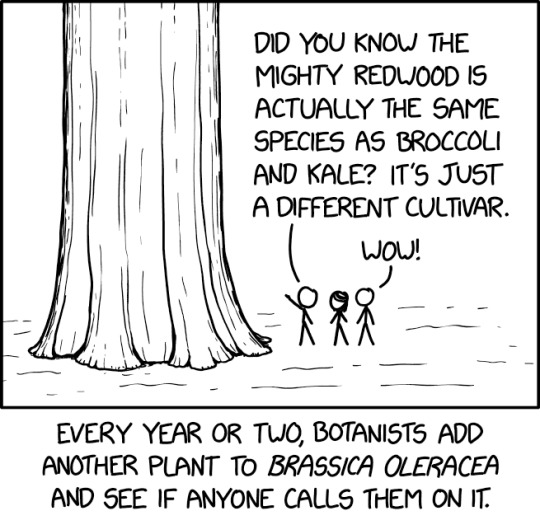
which is a reference to this:

namely, the fact that the wild mustard Brassica oleracea, once domesticated, produced a bewildering variety of vegetables by selecting each cultivar for a different part (cabbages from terminal buds, Brussels ssprouts from lateral buds, broccoli and cauliflower from flower buds, kale from leaves, and so on), all of them still being technically part of the same species, Brassica oleracea var. whatever.
Now, as far as I know, nobody has bred B. oleracea into a tree. But there is, not quite a single species, but a genus, that has gotten pretty close to that kind of internal morphological diversity:
Behold Euphorbia, the genus of spurges, counting over 2000 species (that nevertheless are often capable of interbreeding) scattered throughout all continents:
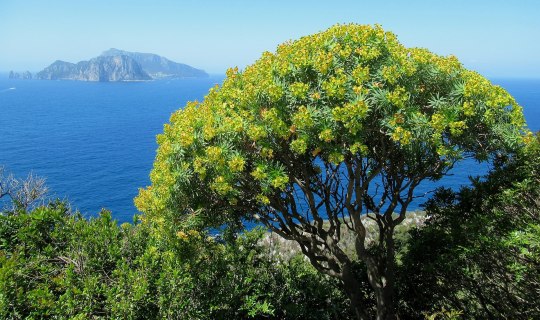
Euphorbia dendroides (Mediterranean)
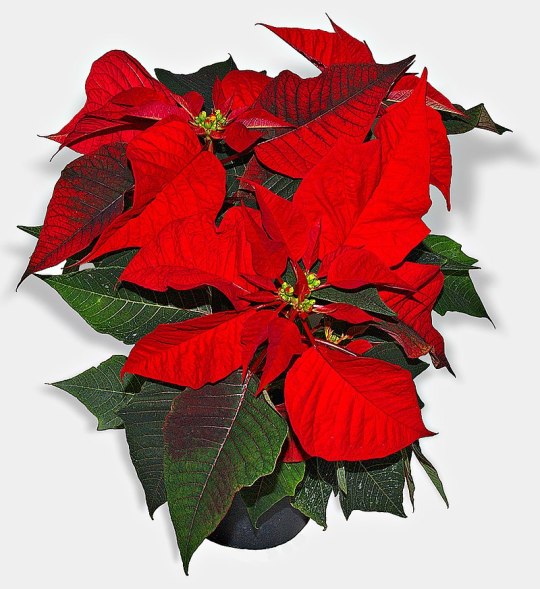
The poinsettia, Euphorbia pulcherrima (Central America)
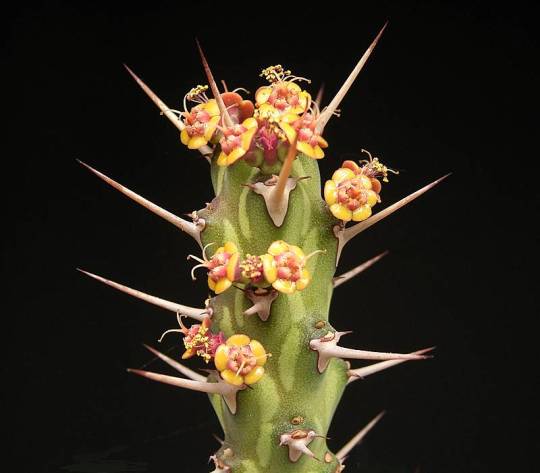
Euphorbia actinoclada (East Africa)|, one of the many cactus-like species (cacti proper are all American species except one, so if you see a cactus-like plant in an African or Asian deserts, odds are it's actually a kind of euphorbia)
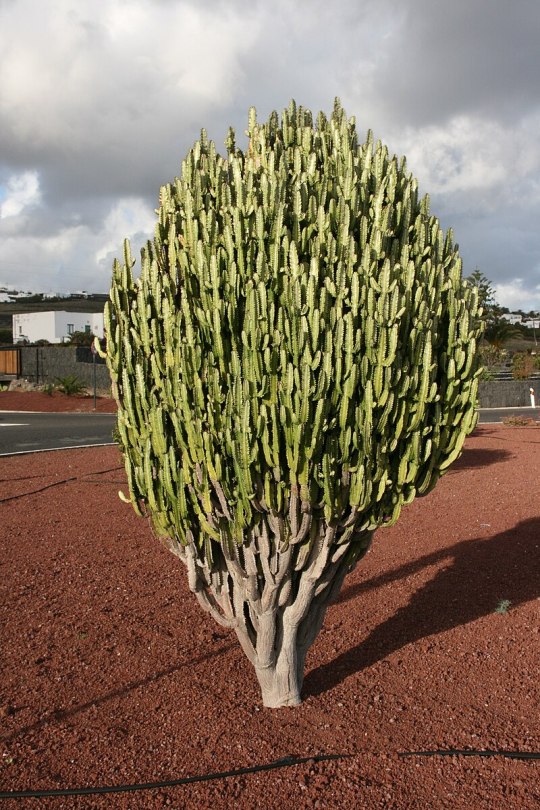
Euphorbia trigona (Central Africa)

Euphorbia myrsinites (Southeast Europe)
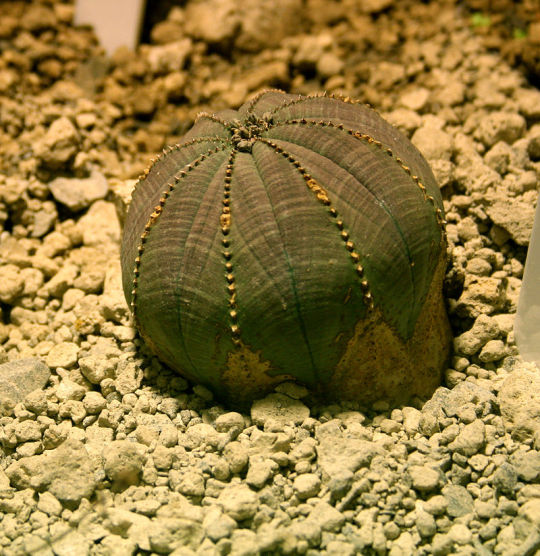
Euphorbia obesa (South Africa)
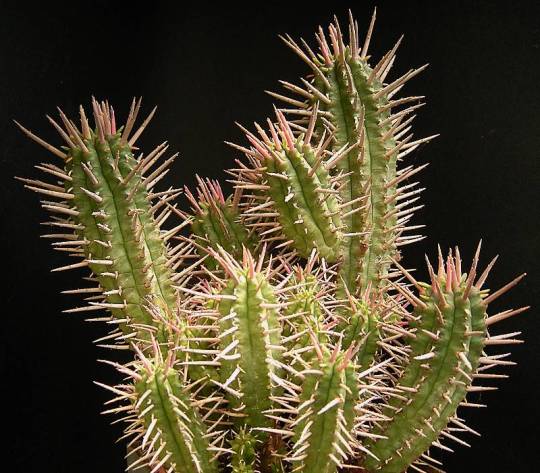
Euphorbia ferox (South Africa)
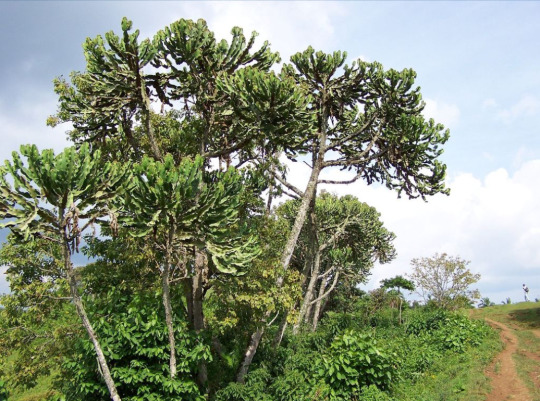
Euphorbia ampliphylla (East Africa) (source)
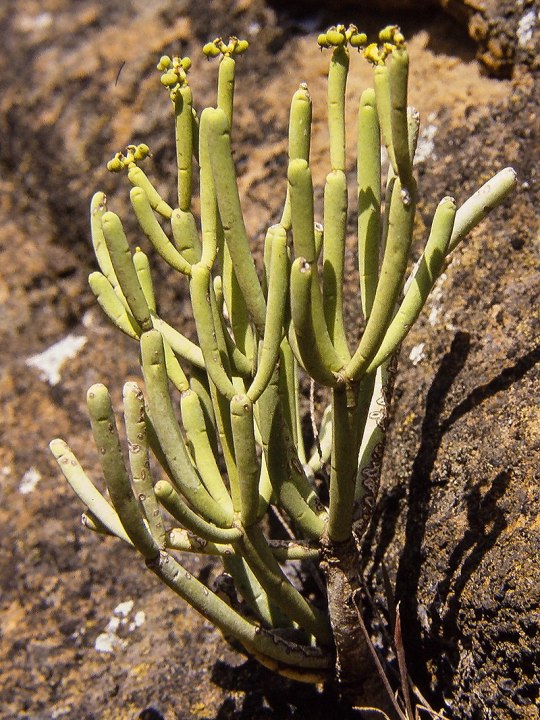
Euphorbia aphylla (Canary Islands)
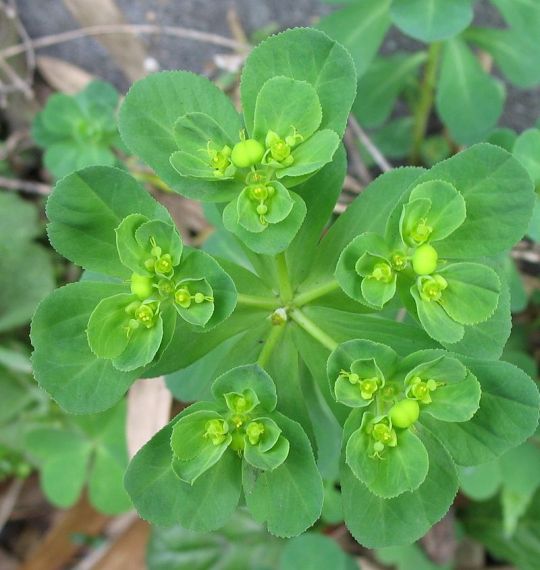
Euphorbia helioscopia (Eurasia and Africa)
And so on, and so on...
3K notes
·
View notes
Photo

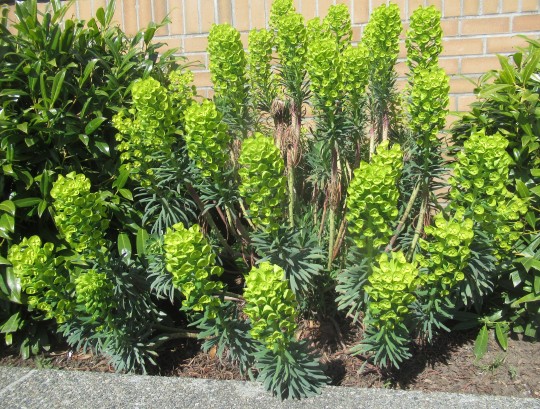
Euphorbia characias (var. wulfenii) (Mediterranean spurge)
Green flowers
Flowering plants evolved about 140 million years ago but for the first forty million, they weren’t particularly colorful. Their basic contract with insects was the same, you help us with seed production and we’ll give you food (pollen and nectar) in return. But then the bees evolved and, all of sudden, flowering plants became a lot more beautiful. This is because bees have much better color vision than most insects. Bees are sometimes described as wasps that became strictly vegetarian.
Maybe, the Mediterranean spurge didn’t get the memo - it has green flowers! All true petals developed from conventional leaves anyway but this spurge seems to have got stuck, half way through the process. What appear to be green, cuplike petals are just highly specialized leaves (bracts) but bees are still attracted to it’s flowers. In addition to almost full-color vision, bees are very good with edges, and they can see this flower’s shape just fine.
#flowers#photographers on tumblr#euphorbia#spurge#green#fleurs#flores#fiori#blumen#bloemen#Vancouver
162 notes
·
View notes
Text
Morning meditation — Having transcended all conceptual views.
Morning meditation — Having transcended all conceptual views. https://wp.me/pFy3u-9AQ
‘Having transcended all conceptual views, being pure and peaceful within, well liberated and independent, one goes beyond all attachment.’ The BuddhaUdāna (Ud 1.10) Mediterranean Spurge. On the net, of course, it’s morning, afternoon, evening, or nighttime 😀 somewhere. Click here to read more Morning Meditation posts. On our Twitter account, Buddhism Now @Buddhism_Now, most mornings we post a…
3 notes
·
View notes
Text


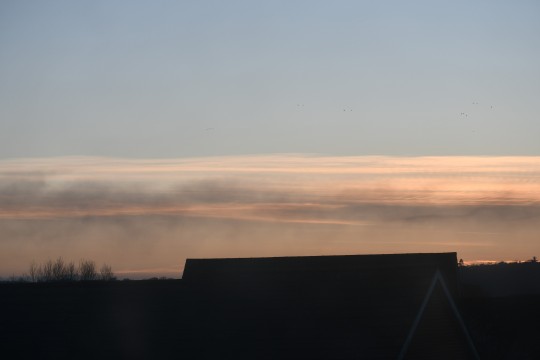

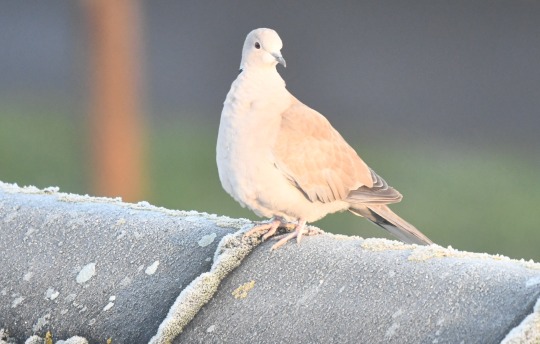


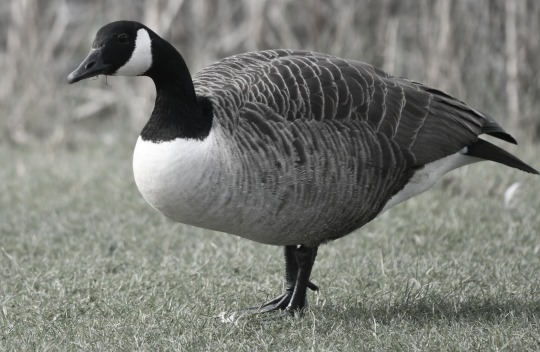




06/03/2024-Silver-sided Sector spider, post sunset sky, blossom and Collared Dove today, Great Crested Grebe and Canada Geese at Lakeside Country Park, Mediterranean Gulls at Hayling Island and sky at Testwood Lakes in recent days and phone photos of spurge at Winchester Cathedral and beautiful frosted red deadnettle this morning. Peregrine, Sparrowhawk, Wren, Great Tit and hyacinth were great to see in Winchester too with Cetti's Warbler heard by the River Itchen.
#photography#birdwatching#red deadnettle#spurge#silver-sided sector spider#peregrine falcon#sparrowhawk#winchester#england#uk#world#nature#walking#happy#outdoors#march#2024#europe#hampshire#wren#birding
3 notes
·
View notes
Text
Mediterranean Spurge — FOTD Nov 25
Hi all My latest post for Cee’s FOTD. Mediterranean Spurge I did an AI watercolour transformation for this interesting succulent. Mediterranean spurgeMediterranean Spurge — FOTD Nov 25

View On WordPress
0 notes
Photo

{Euphorbia characias} Mediterranean spurge, injuriously poisonous plant, its sap can burn your skin off. Used from ancient time as medicine for removal of warts, growths and other tumors on skin by sheer power to burn them off painfully, IT IS VERY MUCH NOT RECOMENDED TO DO THAT!!!!
0 notes
Text
Basic plant research
I decided to start by searching up plants that can survive in intense weather conditions (https://www.housebeautiful.com/uk/garden/plants/a28548574/garden-plants-types-of-weather/)
This is what i found :
1. Euphorbia Characias
Commonly known as the Mediterranean Spurge, this green plant can grow up to 1.2 meters in height. Perfect to add into your garden if you want your outdoor space to look fuller all year round.

2. Hydrangea Arborecens ‘Annabelle’
Plant this striking flower in boarders around your garden for a beautiful splash of white. Its flower heads can grow as large as 30cm in width and make a statement wherever they are planted. It's worth noting that they can be toxic to dogs and cats, so take care if you're a pet owner.
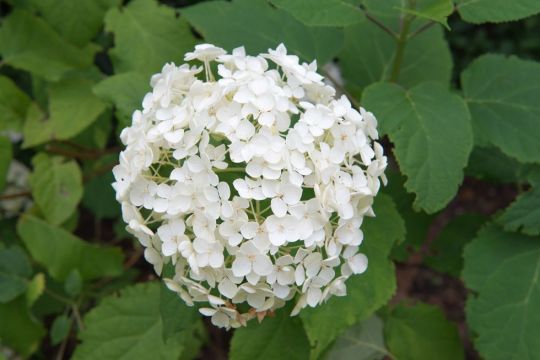
3. Rosa ‘Wedding Day’
These beautiful lemon-white roses bare large clusters of scented flowers that are sure to brighten up your outdoor space the moment they bloom. For best results, grow this flower in well-soiled, moist ground and ensure it gets plenty of sunlight.

4. Iris Pseudacorus
Ideal for wildlife gardens, the rich nectar of this plant will attract bees, hoverflies and other insects. This is perfect to plant near a pond if you have one.
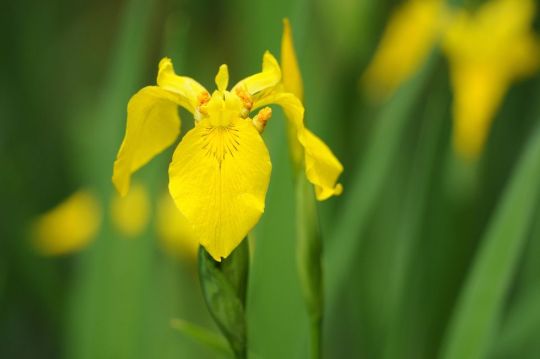
5. Geranium Phaeum
This plant is prone to self-seed so can be useful to fill large spaces in the garden. Commonly called dusky crane's-bill, mourning widow or black widow, the dark violet flower is a beautiful addition to any garden.
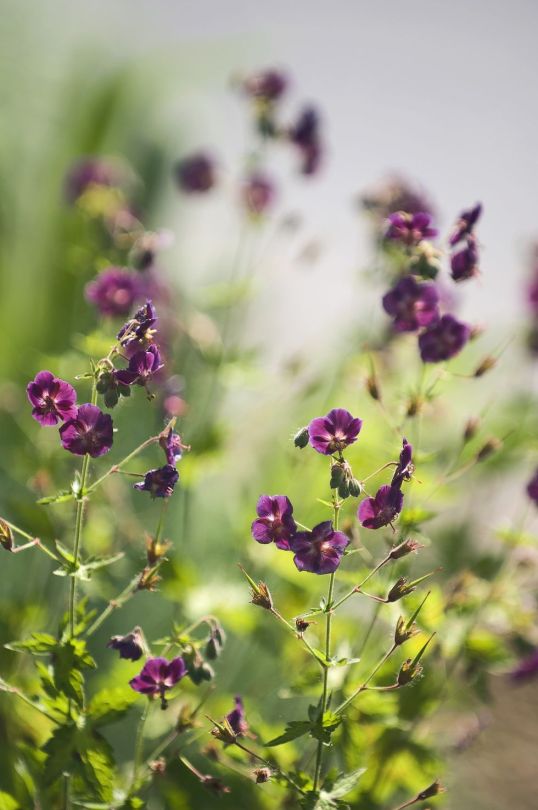
6. Primula Vulgaris
Known for its long flowering period, this plant can flower as early as December. Wonderfully, too, the primrose provides a place for butterflies to come and rest.
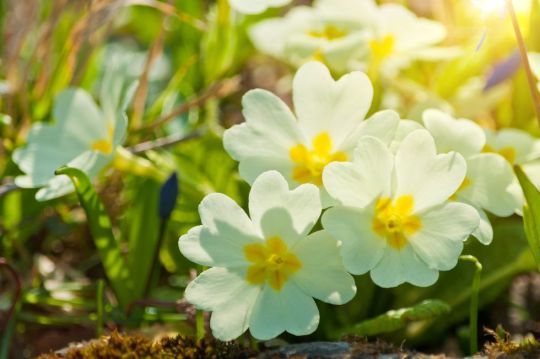
7. Hemerocallis ‘Burning Daylight’
This glowing orange plant has large ruffled flowers that open most mornings and wither at night. A flower on the same stem can replace them the next day, so you'll be sure to see it constantly blooming.
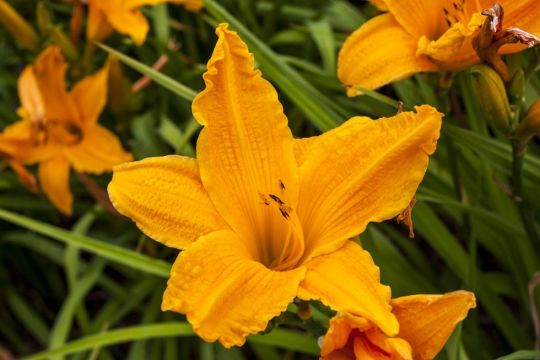
I like these plants, but one problem is that they all seems to be a similar style of plants, all flower-like (besides the first one). I was hoping to find a larger variety of plants maybe some that were more alien-like, some vines, some fungi possibly. From this, i decided to search "alien-like plants" and came across things that were more my original thoughts




These plants i really enjoy the look of. They all give off that alien-like post apocalyptic world type plant i will defiantly aim to try and make something similar to one of these but maybe with a twist on it.
0 notes
Text





some good portland flowers
16 notes
·
View notes
Photo


Mediterranean Spurge (Euphorbia Wulfenii) in San Francisco, CA
2 notes
·
View notes
Text

Mediterranean Spurge - Trovisco-macho (Euphorbia characias)
Sintra/Portugal (23/11/2023)
[Nikon D850; AF 105mm Micro-Nikkor F2,8 with Circular Flash Nissin MF 18; 1/250s; F16; 400 ISO]
25 notes
·
View notes
Text
Mediterranean Spurge-- FOTD Aug 29
Hi all 👋 My latest post for Cee’s FOTD. This Euphorbia characias, also known as the Mediterranean Spurge or Albanian Spurge, can be found in the grounds of Culzean Castle. Mediterranean Spurge
0 notes
Photo



1 note
·
View note
Photo




Euphorbia characias, Euphorbiaceae
A few days ago I wrote about the variegated version of the Mediterranean spurge, an Euphorbia which does particularly well in dry soils prone to drought and with little attention, two abilities developed to thrive in its native habitat and which have gained it attention within the ornamental market.
At Glasgow Botanic Gardens, right after some winter rain and in bloom, this spurge rivaled its variegated counterparts in attractiveness. Looks are not all though, and it’s important to note this species is a really good source of nectar, and one of the few flowering so profusely and early in the year at the gardens, although generally flowering more in spring. In particular, the Mediterranean spurge attracts some species of Diptera and Hymenoptera, with ants playing an important part in seed dispersal.
The link below takes you to a Royal Horticultural Society list of plants beneficial to pollinators, divided by flowering season and month, which can help plan a wildlife friendly garden and attract more of those welcomed visitors to boost your food production.
RHS Perfect for Pollinators plant list
#euphorbia#euphorbia characias#euphorbiaceae#spurge#mediterranean spurge#drought tolerant#pollinators#wildlife friendly garden#nectar source#rhs#royal horticultural society#glasgow botanic gardens#glasgow#scotland#plant blog#plant photography#plant identification#botany#plantblr#plants#ornamental plants#gardeners on tumblr#not a flower#cyathia#euforbia#piante#blog piante#botanica#identificazione piante#fotografia piante
40 notes
·
View notes
Text
Morning meditation: Sometimes life feels like a battle doesn’t it?
Morning meditation: Sometimes life feels like a battle doesn’t it? https://wp.me/pFy3u-9mT
‘Sometimes life feels like a battle doesn’t it? We go though the gate and face ten thousand warriors.’ Zen Buddhism Mediterranean Spurge with raindrops. On our Twitter account, Buddhism Now @Buddhism_Now, most mornings we post a ‘morning meditation’ like the one above. On the net, of course, it’s morning, afternoon, evening, or night-time 😀 somewhere. Click here to read more Morning…
0 notes